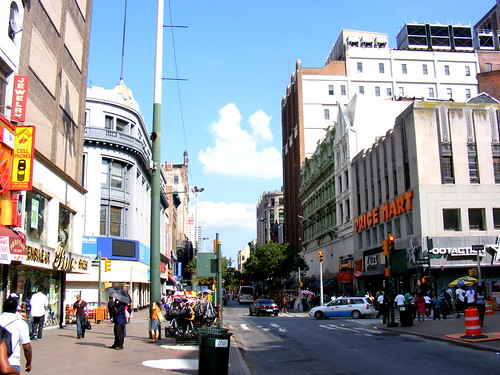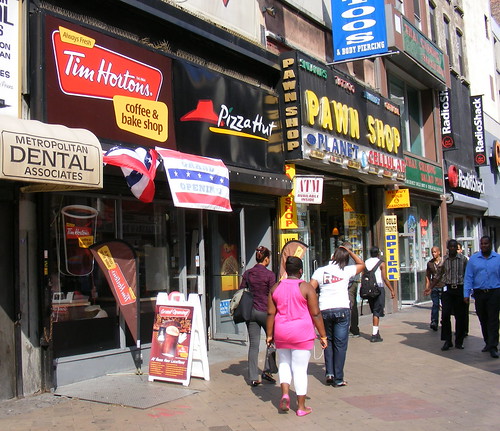Rod Dreher, a social commentator who writes under the self-titled banner “crunchy conservativism,” shared on his blog an interesting confession about the suburbs. Not interesting because it’s strange, but interesting because it’s so altogether normal. Despite his long-standing preference for, or at times even a philosophical commitment to walkable urban neighborhoods, he thinks he just might choose the opposite kind of house next time he moves. A conventional suburban home. Why?
“Whenever we get ready to buy our next house, it's not going to be in the city -- here in Philly, there's a four percent tax added to your wages -- but in one of the suburbs. I'd be lying if I said schools weren't a big part of it. We can't afford private schools where we live now, and the urban public school in our neighborhood leaves much to be desired, for the usual reasons. … Besides, life with kids is just easier in the suburbs. I hate to admit it, but it's true. The older I get, and the older my kids get, the less tolerance I have for the kinds of things that I didn't much mind when I was younger and in love with city life.”
Looking through the lens of personal morality or rationality or whatever, who can begrudge Dreher this decision? Let me immediately distance myself from those who reflexively cast judgment on suburbia and all who inhabit it like hurling a ball of fire down onto Sodom and Gomorrah. Let the record show, suburbanites are not evil. Yet whatever honesty Dreher reveals in this personal question, there’s still a structural tension in his mind. He can go on to say
in an update,
“I think any place that makes you car-dependent is bad for your soul and the community's soul. The way we built suburbia in the 20th century was foolish and destructive in a number of ways. But we are where we are, and the flaws of suburbia don't obviate the flaws of urban life for middle-class families in the year 2010.”
Very obviously, his ideals are clashing with the reality of how things happen to have been built in America.
This is exactly why you should immediately distrust anyone (ahem …
Joel Kotkin) who insists that because people are “choosing” to live in the suburbs, in fact, the suburbs are their market choice - that the silent majority has spoken with their actions. As the logic goes: if everyone seems to be buying cookie dough ice cream then it means they must really like it, so somebody should go ahead and make more cookie dough ice cream. It's only the pistachio-craving elites who urge otherwise. Ok, but buying a home is different:
First, every home is a bundled good. You’re not just buying the roof that keeps rain from hitting your head and a patch of grass. You’re buying the educational options for your children, the transportation access to your job, the character of the neighborhood and the status it confers, membership into a jurisdiction (or HOA, for that matter) and the services it provides, a perception of safety, and on and on. You can’t always just disaggregate these parts, like ordering a Soy Mocha Half-Caf latte at Starbucks, at least not if you need to fit it into a middle-class budget. This is why people like Dreher may have to compromise on neighborhood form for, say, good schools.
Which gets to the second point. Real estate supply is always constrained in some way, whether by geography or land use controls (yes,
Houston too). Even in metro areas with plenty of vacant land, there’s only one piece of land with
that house on it. That’s just the nature of space. No two places are alike. Because the market price responds to these inevitable supply constraints, consumer demand does not always win the day. Middle-class families like the Drehers can be priced out of even preference bundles that seem logically reasonable - like a modest home on a small lot with ok schools near some neighborhood amenities.
Thirdly, transitions in the housing stock move painfully slowly - as they should, because these are really durable goods. But there are other reasons the supply does not hasten to meet new demand. Infrastructure built to support an old model is hard to readapt, vested financial interests try to maintain property values through land use controls, and well-worn development business models seem less risky. As a result of these forces of inertia, a lot of us are living in houses built for the preferences exerted a generation or two ago, maybe even if it was just built five years ago.
Fourthly, homes have traditionally been investments as well as consumer goods. You’re not supposed to just buy what you want, but you also have to buy what you perceive others to want. This can lead to a self-perpetuating bias for the status quo and an over-emphasis on quantitative measures like square footage. But maybe
as the investment side fades these days, we can feel more free to exercise our own desires.
Finally, there’s a long-standing mismatch in most metro areas between the resources for social services and those who need them most. Over many years, the demographic categories
have sorted themselves out geographically and circumscribed themselves with political boundaries. This is part of the reason for the extra tax burden Dreher is referring to. Many suburban areas have absolved themselves of having to pay this by ensuring that the region’s share of the poor are not within their borders. Making a personal decision to buck the trend usually does carry a cost.
The point, maybe hidden in here somewhere, is that there has to be many Rod Drehers out there, albeit most of them without the time or ability to wrack their brains over the urban planning implications of their choices. For every household choosing the suburbs as suburbs, in all their backyard-grilling, kid-shuttling, lawn-mowing glory, there’s another household who grit their teeth and accept this spatial arrangement because it happens to be the only option available at their price point. This is hardly an argument for building more of them.
Thanks to Architecture and Morality for
launching a discussion on Dreher’s housing thought process.
 Take a look at these maps of changes in median income by census tracts between 2000 and 2005-2009, courtesy of the NY Times site. Orange is positive, blue is negative.
Take a look at these maps of changes in median income by census tracts between 2000 and 2005-2009, courtesy of the NY Times site. Orange is positive, blue is negative.


































